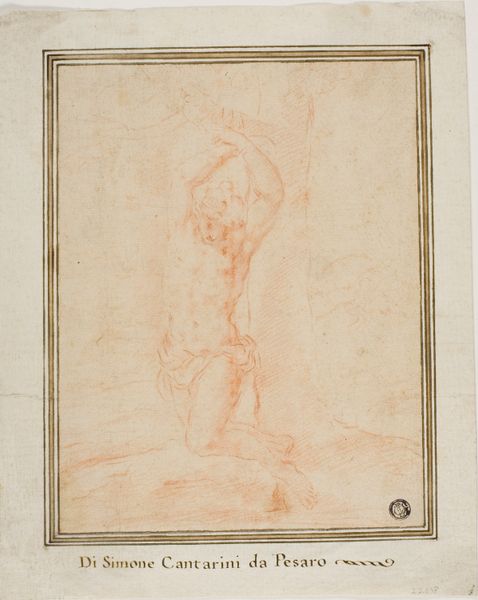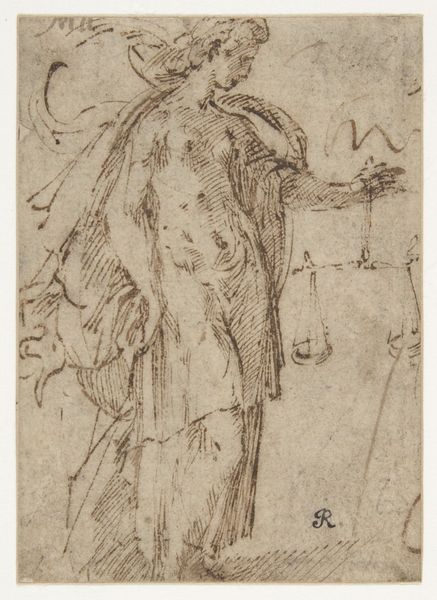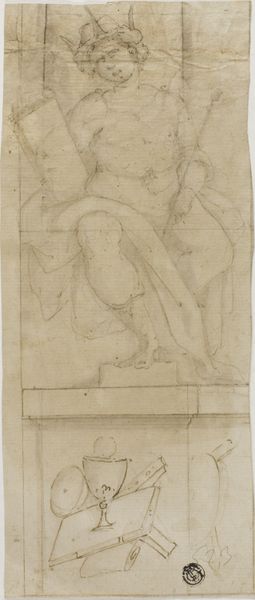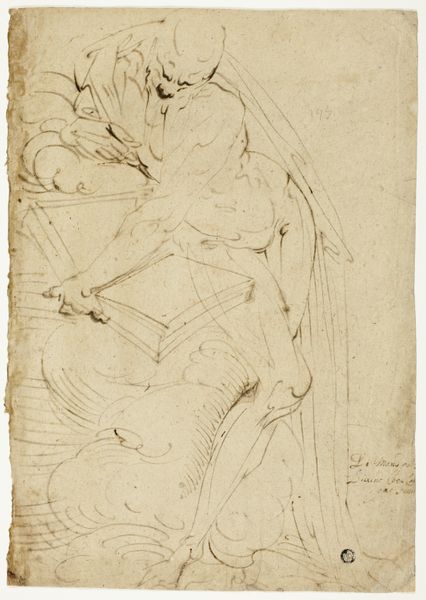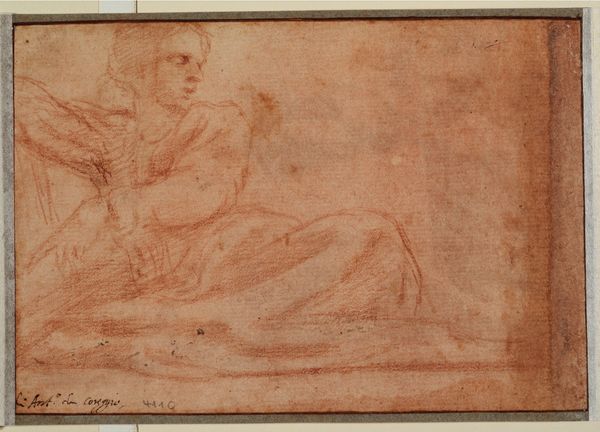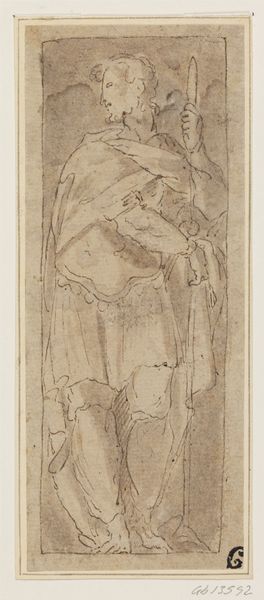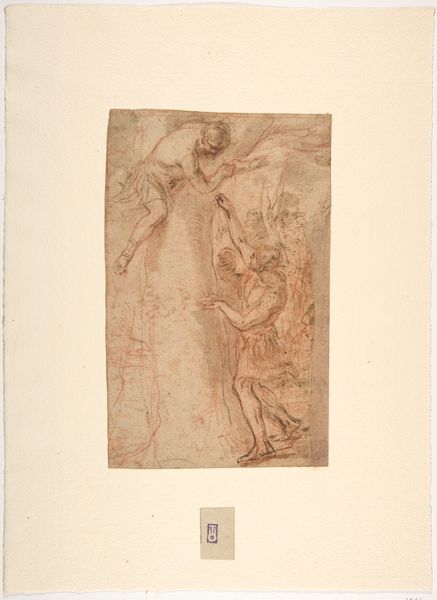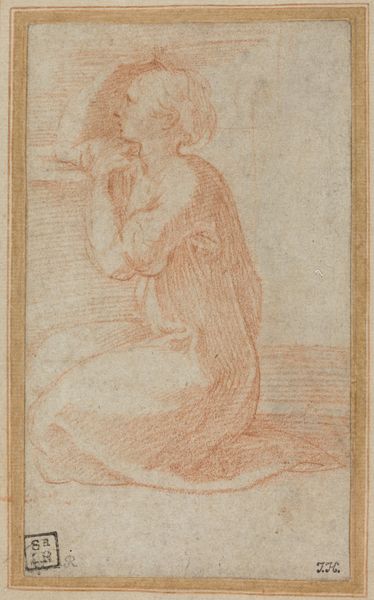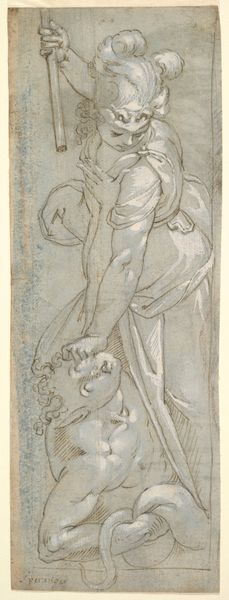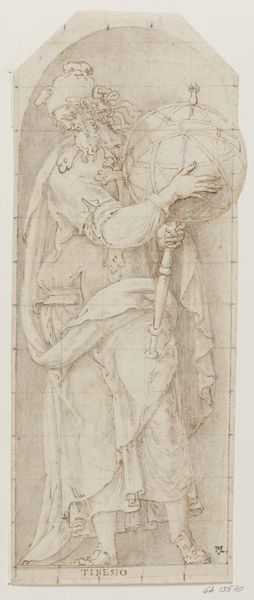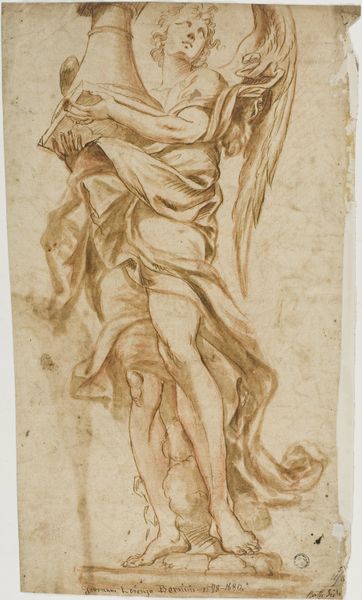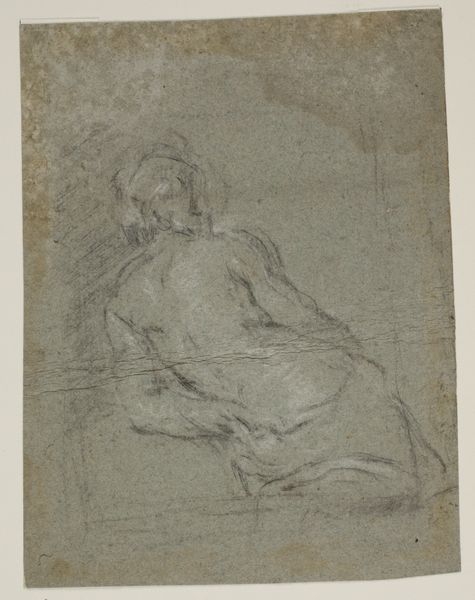
Study for a Portrait of a Field Marshal 17th-18th century
0:00
0:00
drawing, red-chalk
#
portrait
#
drawing
#
baroque
#
red-chalk
#
history-painting
Dimensions: 9 3/4 x 6 1/2 in. (24.77 x 16.51 cm) (sheet)19 x 15 5/16 in. (48.26 x 38.89 cm) (outer frame)
Copyright: Public Domain
Editor: This is Jacopo Amigoni's "Study for a Portrait of a Field Marshal," created in the 17th-18th century, using red chalk. I'm struck by the dynamic pose and how the red chalk lends a sense of urgency to the figure. It’s like a fleeting moment captured in time. What stands out to you when you look at this drawing? Curator: It’s fascinating how Amigoni uses the red chalk to evoke both power and vulnerability. Consider the symbols inherent in the military figure. What does a Field Marshal represent, not just in the 17th century, but across different periods of history? It is always an individual representing supreme power and skill. Editor: That's true, but the sketch-like quality seems to soften that power. I see a tension between the symbol and its execution. Curator: Indeed! Look at the deliberate placement of the figure amidst flowing drapery and armour. Drapery acts as a visual device but it might indicate opulence. What feelings does that association invoke? Editor: It’s like a push and pull. The grandeur is there, but not fully realized. Almost like the artist questioning the glorification of military leaders? Curator: Possibly. And in exploring Amigoni’s intent we tap into the larger questions around war, leadership, and the artistic process itself. The visual symbols trigger our understanding of cultural memory and history, allowing for contemporary re-interpretations. Editor: That really shifts my perspective! It is not just a portrait, but a window into societal values of that time. Curator: Exactly. These studies reveal the power of artistic symbols to evolve over time and provoke new dialogues. Editor: This exploration has completely changed the way I see the artwork, now considering cultural history. Curator: Wonderful. It’s a good thing to always consider a second look.
Comments
No comments
Be the first to comment and join the conversation on the ultimate creative platform.
